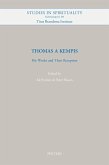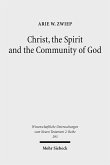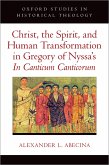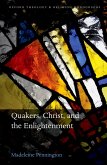The Imitation of Christ (Latin: De Imitatione Christi) by Thomas à Kempis is a Christian devotional book. It was first composed in Latin ca. 1418–1427. It is a handbook for spiritual life arising from the Devotio Moderna movement, of which Kempis was a member.
The Imitation is perhaps the most widely read Christian devotional work next to the Bible, and is regarded as a devotional and religious classic. Its popularity was immediate, and it was printed 745 times before 1650. Apart from the Bible, no book had been translated into more languages than the Imitation of Christ at the time.
The text is divided into four books, which provide detailed spiritual instructions: "Helpful Counsels of the Spiritual Life", "Directives for the Interior Life", "On Interior Consolation" and "On the Blessed Sacrament".
The approach taken in the Imitation is characterized by its emphasis on the interior life and withdrawal from the world, as opposed to an active imitation of Christ by other friars. The book places a high level of emphasis on the devotion to the Eucharist as key element of spiritual life.
The ideal of the imitation of Christ has been an important element of Christian theology, ethics and spirituality. References to this concept and its practice are found in the earliest Christian documents, such as the Pauline Epistles.
The book was written anonymously in Latin in the Netherlands ca. 1418–1427 and Thomas à Kempis is generally accepted as the author. Several sources of authority, including members of his own order, name Kempis as the author, and various contemporary manuscripts, including one autograph codex, bear his name.
The Imitation of Christ is divided into four books which provide detailed spiritual instructions.
The Imitation is perhaps the most widely read Christian devotional work next to the Bible, and is regarded as a devotional and religious classic. Its popularity was immediate, and it was printed 745 times before 1650. Apart from the Bible, no book had been translated into more languages than the Imitation of Christ at the time.
The text is divided into four books, which provide detailed spiritual instructions: "Helpful Counsels of the Spiritual Life", "Directives for the Interior Life", "On Interior Consolation" and "On the Blessed Sacrament".
The approach taken in the Imitation is characterized by its emphasis on the interior life and withdrawal from the world, as opposed to an active imitation of Christ by other friars. The book places a high level of emphasis on the devotion to the Eucharist as key element of spiritual life.
The ideal of the imitation of Christ has been an important element of Christian theology, ethics and spirituality. References to this concept and its practice are found in the earliest Christian documents, such as the Pauline Epistles.
The book was written anonymously in Latin in the Netherlands ca. 1418–1427 and Thomas à Kempis is generally accepted as the author. Several sources of authority, including members of his own order, name Kempis as the author, and various contemporary manuscripts, including one autograph codex, bear his name.
The Imitation of Christ is divided into four books which provide detailed spiritual instructions.









